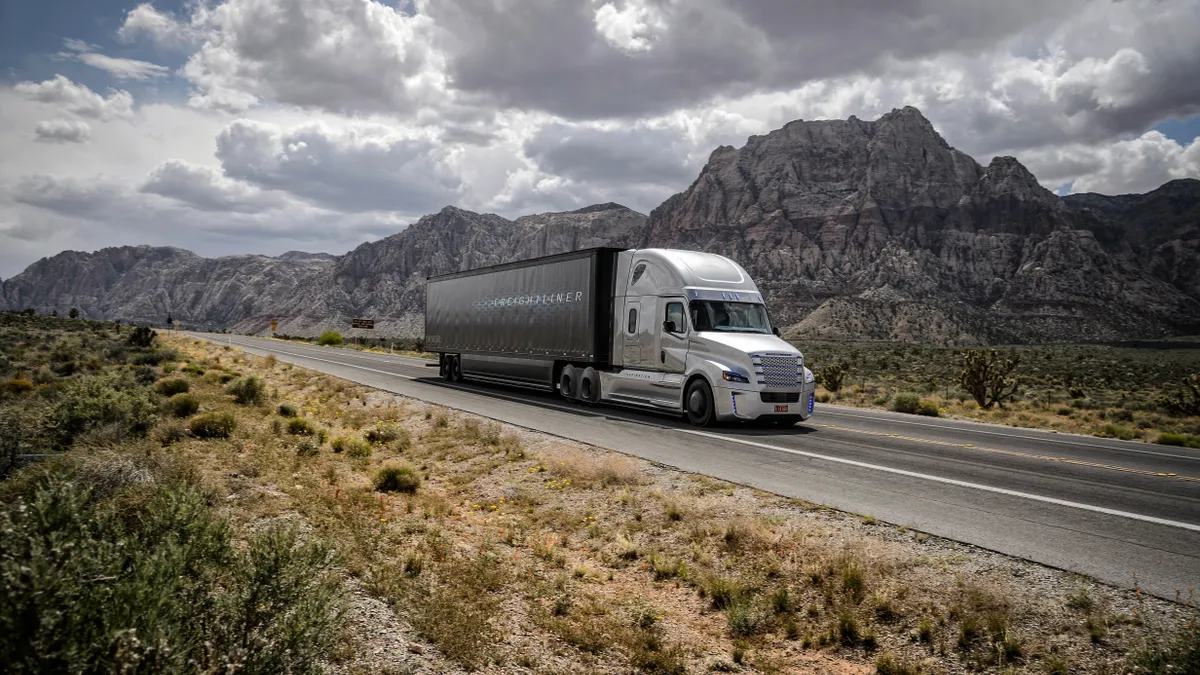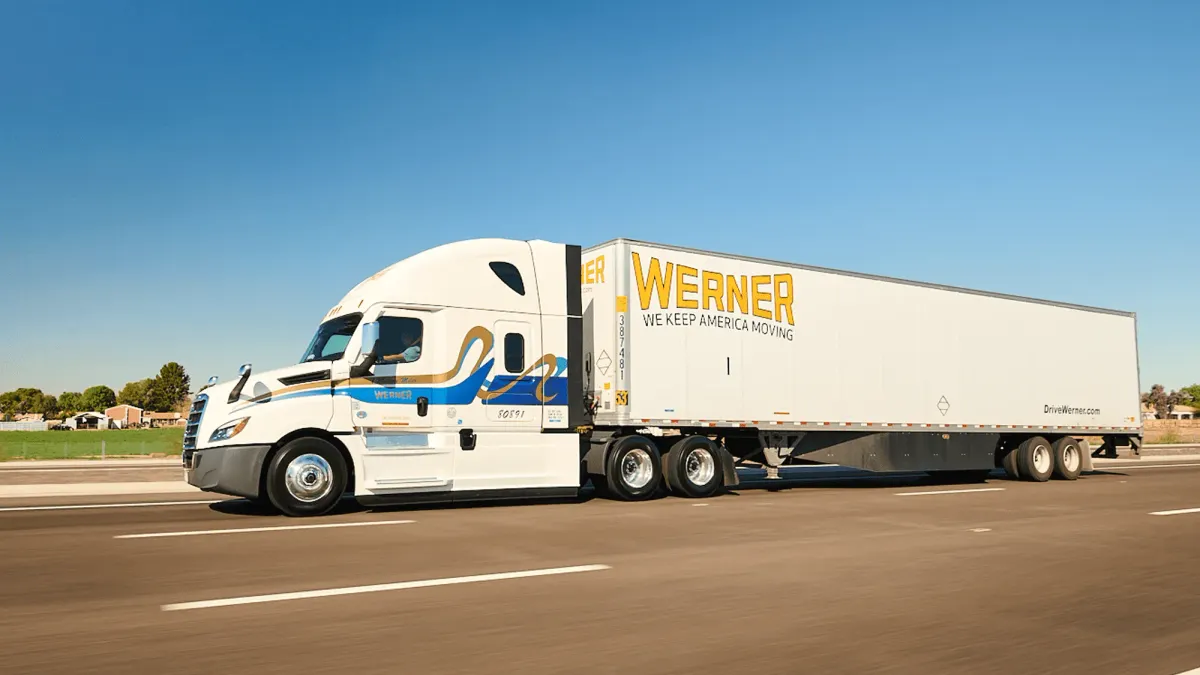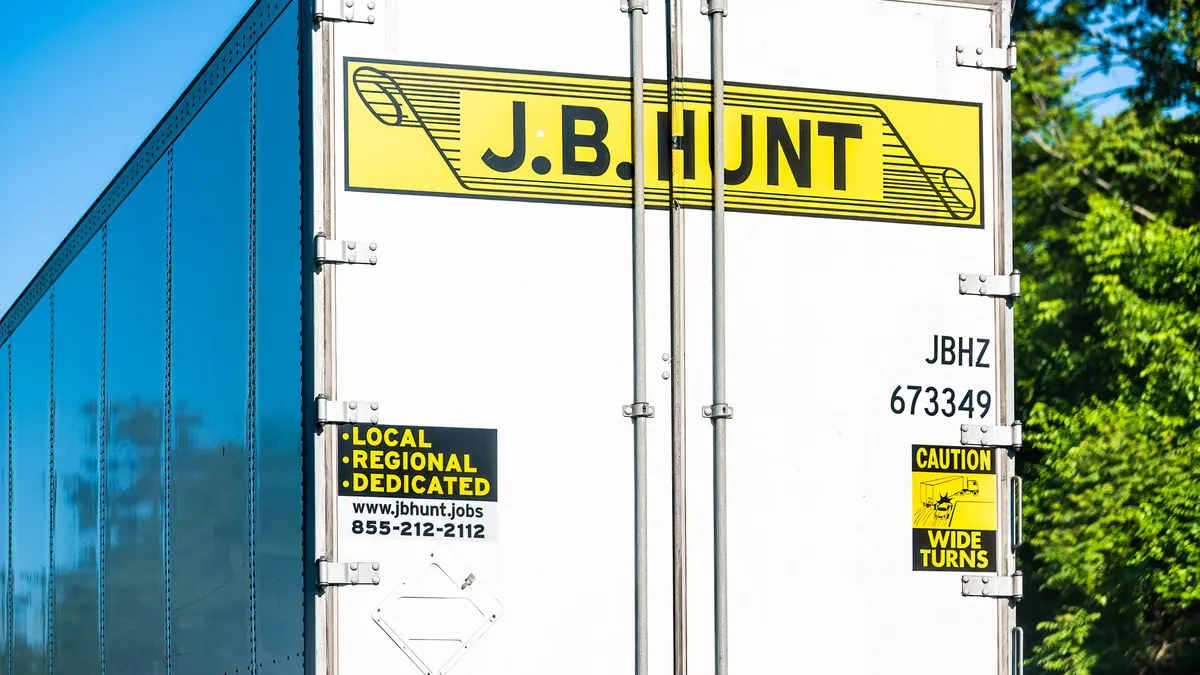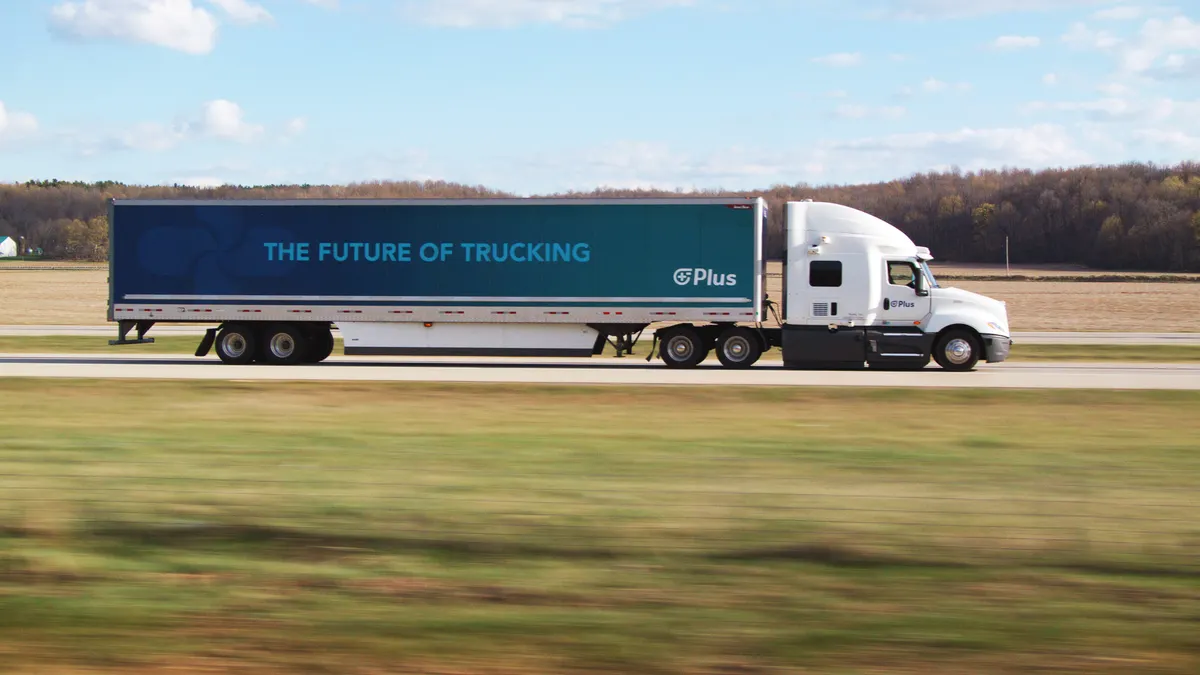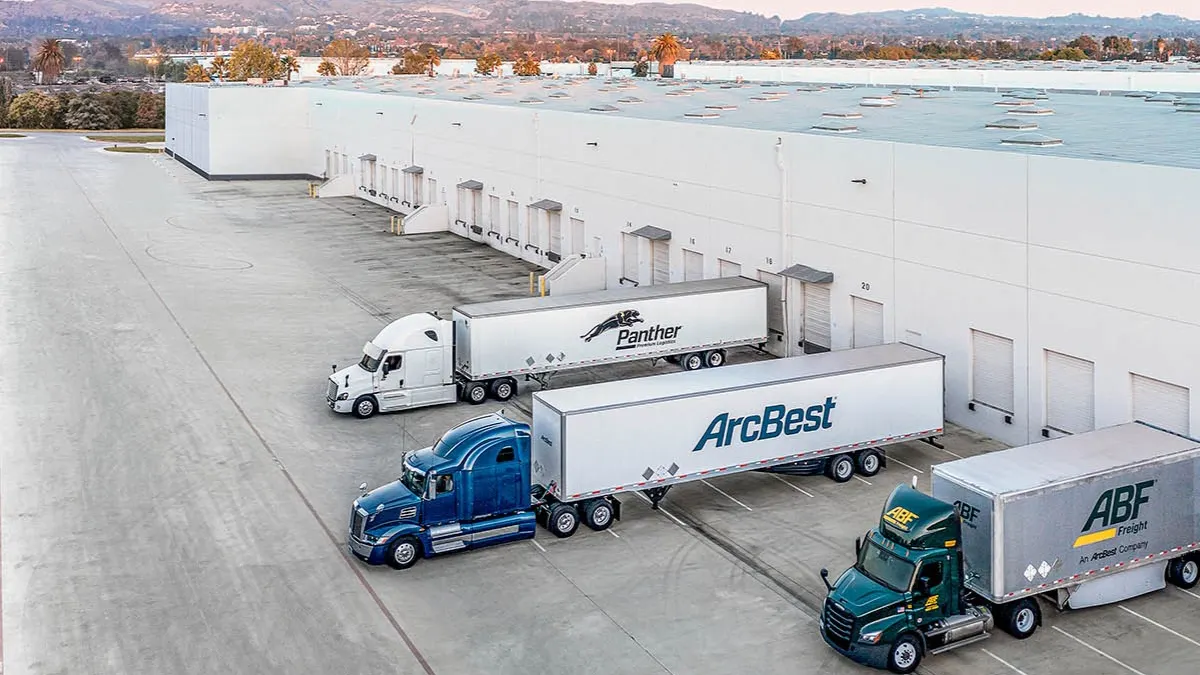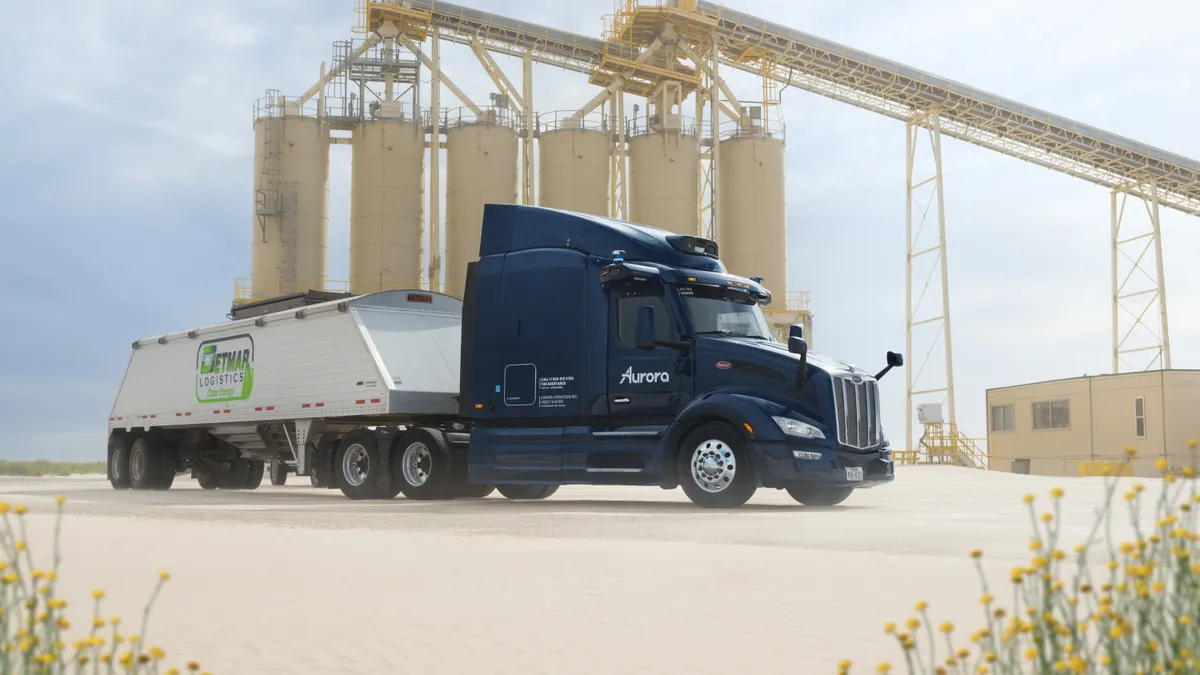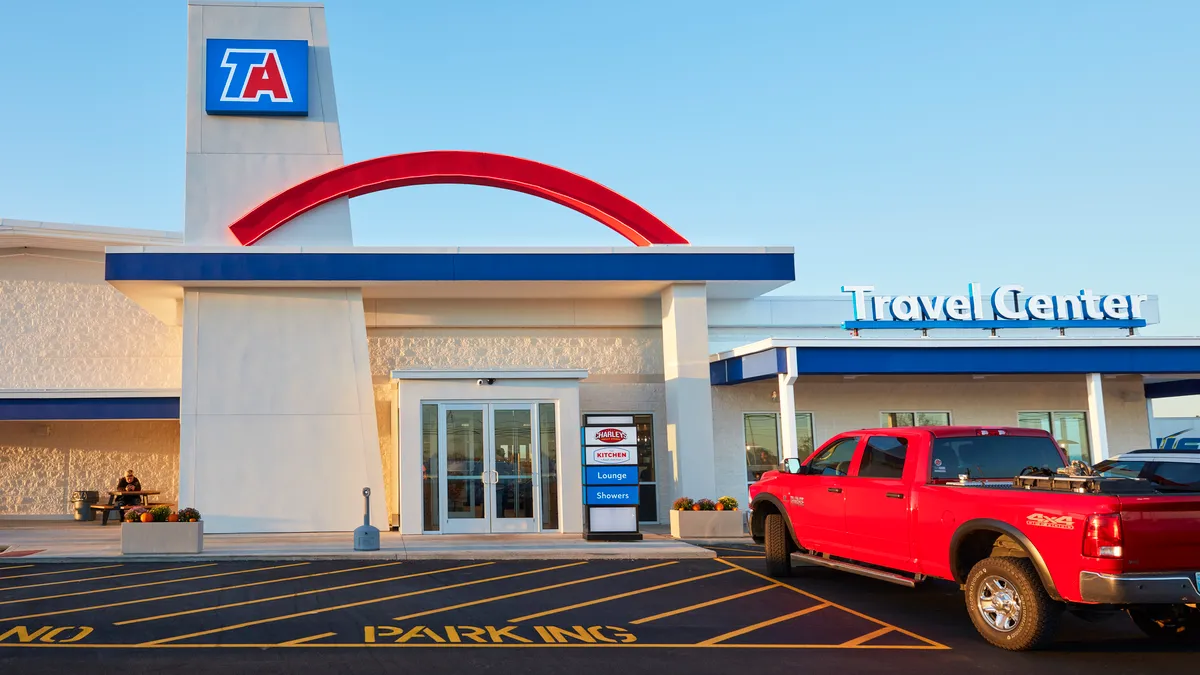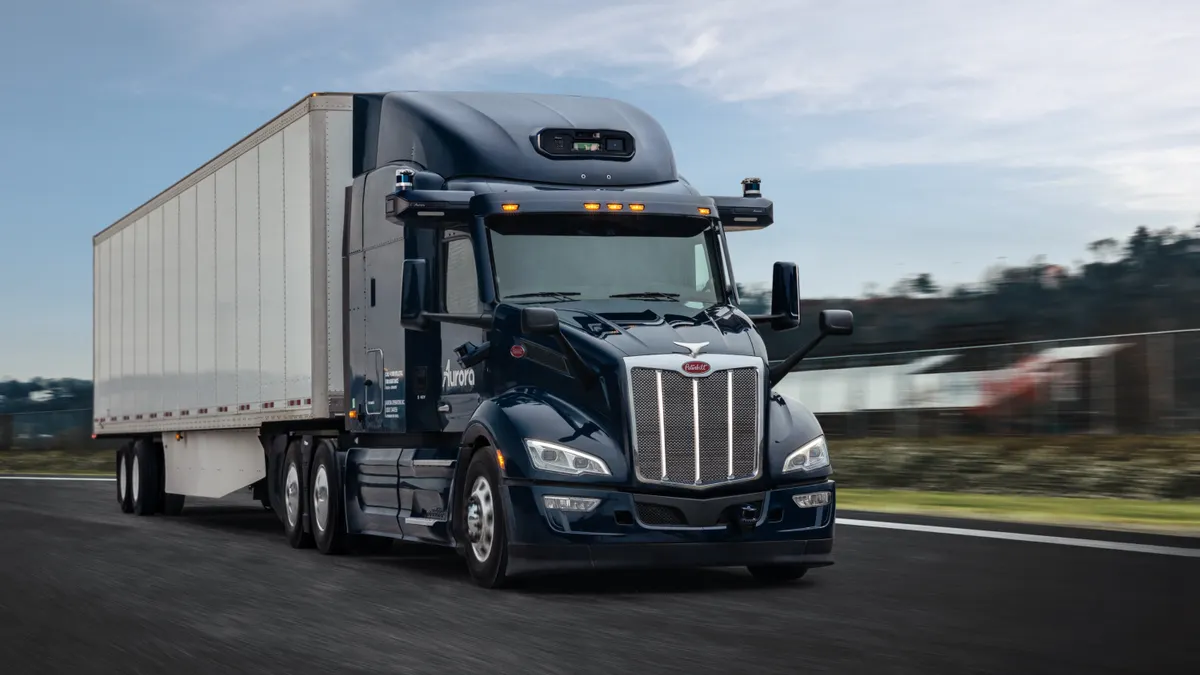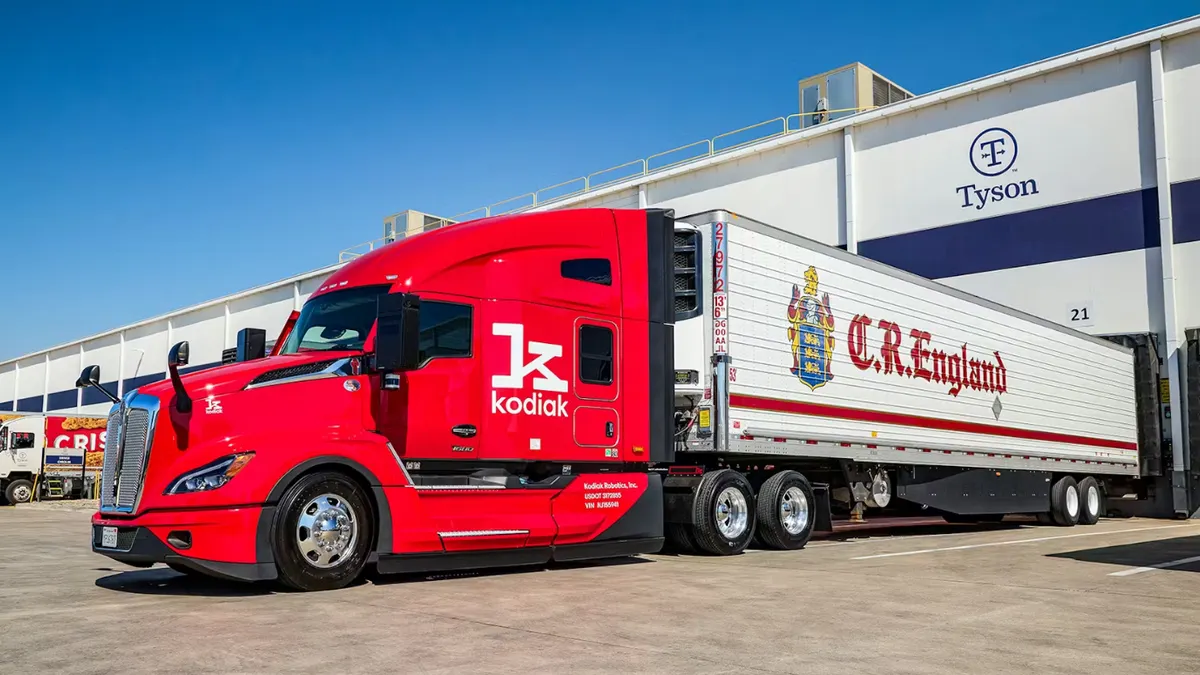Self-driving trucks look like any other 18-wheeler. They have a steering wheel, a seat and a driver — or not. Currently eighteen states allow testing of automated trucks without a driver on board.
Some trial runs currently permit autonomous trucks to pull off at an exit ramp and park themselves, said Mike Roeth, executive director for the North American Council for Freight Efficiency. A driver jumps in to navigate traffic lights and make turns. This part of the journey is a lot more challenging to engineers than highway or freeway driving, he said.
Other trial runs allow the truck to navigate traffic signals and city traffic, Roeth said.
Automated truck technology has come a long way since its inception, but many questions remain about AVs: How exactly they work, where adoption stands and how trucking firms can incorporate the vehicles into their fleets.
What are the levels of automated vehicles?
SAE International created five levels of automation from driver-enabled to fully autonomous vehicles:
- Level 1 – Requires driver assistance. This is the stage for most vehicles today and includes automated steering, cruise control and lane departure warnings.
- Level 2 – Some automation. Steering and acceleration are regulated, but the driver is in complete control of the vehicle.
- Level 3 – Conditional automation. The vehicle makes decisions about overtaking a slow-moving vehicle, braking and others, but a human driver must be onboard.
- Level 4 – High automation. Vehicle can operate without human override under ideal environmental conditions.
- Level 5 – Fully automated. Operates on any road, under any conditions without a driver.
"SAE Automated Vehicle Level 4 is the industry’s focus now," said Ross Froat, director of technology and engineering policy at the American Trucking Associations. The level does not require a driver in certain conditions. "Driver controls, like pedals and the steering wheel, may not be installed."
What industry problems do automated trucks solve?
More freight can be moved safely and drivers have more uptime and less downtime, Froat said of the benefits of automated trucking.
Some drivers believe they will lose their jobs when automated trucks fill the roads. The reality is there’s a big driver shortage and this is more of a solution to a problem in trucking, said Roeth.
"Instead of long-over-the-road highway driving, where truckers are gone for three weeks at a time, they’ll be able to sleep in their own beds every night," Roeth said. "That will help the industry."
Using the vehicles can remedy driver shortage problems while simultaneously increasing the overall workforce. The industry needs several workers involved in the testing, development and deployment of automated trucks, as well as the technicians who maintain these trucks.
Roeth also explained the safety benefits. Unlike a human driver, the computer never gets tired of making decisions. The computer also drives the truck gracefully for good fuel economy.
What challenges does the technology face?
Even with all the positives, the journey to fully autonomous vehicles still has some uphill battles to conquer.
A learning curve comes with new technology, said Stephan Olsen, general manager of the Paccar Innovation Center, in an email.
"We as an industry have a lot to learn about the deployment of autonomous trucks, but there are a lot of very smart people working on this every day," said Olsen. "New technology will bring with it new maintenance practices, training for service technicians, fleet operators, and vehicle inspectors."
"We as an industry have a lot to learn about the deployment of autonomous trucks."

Stephan Olsen
General manager of the Paccar Innovation Center
All the interactions a truck goes through from fueling, loading, unloading and scale inspections will need to evolve, Olsen said.
The most significant enabler may be social acceptance of the technology. Large semi-trucks on the road already are viewed negatively in public opinion, said Roeth.
"How the industry works with consumers on this is critical to its path to success," Roeth said.
In a survey conducted by Pew Research in 2017, 54% of the respondents said they had some level of worry concerning the development of driverless vehicles. Only 11% described themselves as "very enthusiastic."
When will the US have widespread adoption of automated trucks?
TuSimple, a self-driving truck company, plans for AV freight deliveries in 2024 and completely driverless demonstrations by 2021, said CFO Cheng Lu during the ATA's Management Conference & Exhibition last year.
Daimler’s Freightliner Inspiration Truck has been approved for autonomous driving in Nevada.
Froat said Plus.ai expects the industry to have full availability to adopt automated trucks by 2024.
Other companies in the race for fully automated trucks include Embark Trucks, Ike, Navistar, Volvo, Peterbilt Motor Company, Tesla and Waymo, and more new companies are entering the fray every year.
For now, most applications remain in the test phase.
The 2017 Pew survey asked respondents when they expected autonomous vehicles to be on the road. Fifty-six percent said in 10 to 49 years, and 9% said in less than 10 years.
How can fleets get involved?
Trucking firms know autonomous technology is on the horizon, and it’s better to talk about it than ignore it, said Roeth.
"Work with the OEMs early rather than down the road. Learn what the automation journey looks like," Roeth said. "It’s gradually brought into the fleet by adding more sensors and more computers, which has already been going on for 30 years."
Carriers can join associations, attend conferences (in person or virtually) and read the news about self-driving trucks to discover where they might fit in.
Roeth has seen keen interest in fleets signing on for early testing
"Work with the OEMs early rather than down the road. Learn what the automation journey looks like."

Mike Roeth
Executive director for the North American Council for Freight Efficiency
Olsen said the deployment of Level 4 autonomous trucks won’t be a light-switch event, but rather an evolution.
"Adoption will grow as the technology is thoroughly validated and tested in specific use cases, starting with linehaul, on-highway applications on simple interstate scenarios and in fair weather conditions," said Olsen.
Then, more challenging driving conditions like regional haul on secondary roads and inclement weather will follow.
Level 4 autonomous trucks on U.S. highways is not a question of if, Olsen said, but a question of when.

